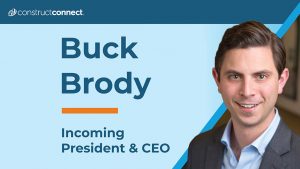The Federal Reserve’s decision to cut its key overnight borrowing rate by 50 basis points is undeniably good news for the U.S. construction sector suggests but he says weaknesses that persist in some corners of the construction economy will remain a challenge.
On Sept. 18 the U.S. central bank cut its benchmark overnight rate to the 4.75 per cent-5.00 per cent range.
“There’s a little more light at the end of the tunnel because of the decision that was made but there’s still a lot of unknowns and challenges facing our industry,” said Guckes recently.
“I think interest rates will help to lift things a little bit now, maybe more than a little bit in 2025, but your geography, the subcategories that you serve as a construction firm…those things will have a huge influence on your company’s experience next year.”
Guckes assumed the role of É«ÖĐÉ« chief economist three months ago upon the retirement of Alex Carrick. For the first time he will serve as a his firm’s lead presenter at the along with co-presenters from the and the
The Sept. 18 interest rate cut and the prospects for more will certainly be a salient topic during the November webinar. Guckes said he has already had numerous conversations with É«ÖĐÉ« clients and has gained insights into how he can serve them.
“What those people need are actionable insights,” he said.
“Our job is really to get into that nitty gritty. There’s all this data out there, and there’s more of it every day. Our job is to figure out what matters to our customers. Once we know what parts of it matter, then start to come up with some analytics and some insights from the relevant data.”
An immediate effect of the rate cut was that lenders reduced mortgage rates, with one source noting the interest rate on a 30-year mortgage was now 6.15 per cent, a two-year low.
“That’s a good thing,” said Guckes. “First of all, it’s going to really encourage construction demand…because you’re going to help the affordability of housing, which is a big problem, and the interest rate is just as much of a problem as is the average home price.”
Secondly, he said, as the interest rates begin falling, it may begin to tempt existing homeowners out of their homes. Owners have been unwilling and could not afford to move, which was grinding the gears of the housing market, Guckes said.
Potential benefit for CRE
“So this part of the construction market should benefit, I think, sooner than a lot of the other ones.”
Another potentially positive outcome is that banks may become more inclined to lend to the commercial sector.
With vacancy rates as high as 20 per cent in the office sector and retail also struggling, the amount of rental income coming in each month hasn’t always been able to cover the mortgage.
“As we begin to lower interest rates, hopefully…some of those existing CRE properties can pencil in, meaning that their rental income will begin to more than cover the cost of whatever their newly refined mortgage rate is, which should hopefully be lower here very shortly.
“And that’s all very good news.”
Those various factors are going to serve as strong tailwinds for the construction industry moving into 2025, Guckes said, but the refinancing will take time.
Meanwhile, he noted, there are subsectors that still have the same problems. Office is the big one.
“Just because interest rates are a little bit lower, that may or may not be enough to help the office segment when you have 20-per-cent vacancies.”
Geography is another persistent factor.
Economists are seeing more challenges in Mid America than they are on the coasts, Guckes said.
Another example is multi-family housing in Texas, after builders rushed in to build to take advantage of strong migration to that state. Now there is oversupply.
“If it’s oversupplied, a small change in interest rates isn’t going to protect everybody.”
Additionally, Guckes said, lower interest rates may boost the economy but the problem with construction labour supply remains unabated.
“The construction labour situation will only be made worse by bolstering additional demand,” said Guckes. “How companies solve their labour shortage, or labour constraints, is going to be probably the biggest factor towards their long-term success, and that’s something I say a lot in my presentations, you better have a labour strategy.”
To register for the
Follow the author on X/Twitter @DonWall_DCN.








Recent Comments
comments for this post are closed